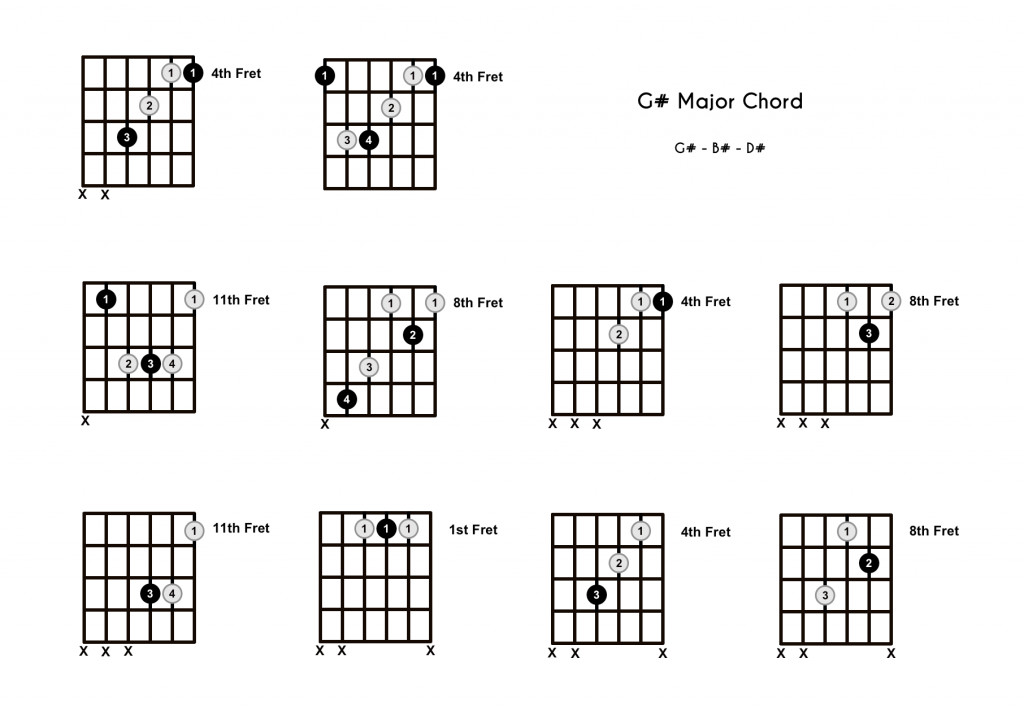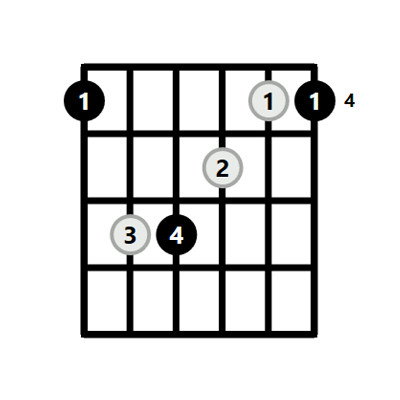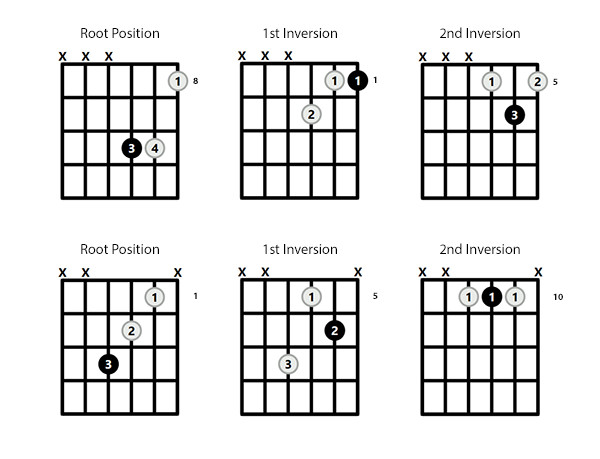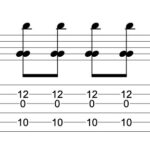While often overshadowed by its enharmonic equivalent, the Ab Major chord, the G# Guitar Chord is a vital component in certain musical contexts and keys. You might encounter it less frequently than Ab, but understanding and being able to play the G# chord expands your guitar vocabulary and theoretical knowledge. This guide will provide you with a comprehensive understanding of the G# major chord, exploring various ways to play it and its place in music theory.
Understanding the G# Major Chord: Theory Basics
The G# major chord, at its core, is built upon three fundamental notes: G#, B#, and D#. These notes are derived directly from the G# Major scale, specifically the 1st (root), 3rd, and 5th degrees. Like all major chords, the G# chord embodies a characteristic bright and uplifting sound due to its specific interval structure.
Let’s break down the intervals within the G# major chord, starting from the root note (G#):
- Major 3rd: The interval between the root (G#) and the second note (B#) is a major third.
- Minor 3rd: The interval between the second note (B#) and the third note (D#) is a minor third.
- Perfect 4th: Stepping back to the root note (G#) from the third note (D#) creates a perfect fourth interval.
In the key of G# Major, the G# chord naturally takes the position of the tonic or I chord. For a broader understanding of the G# Major key, here are all seven chords within it: G#, A#m, B#m, C#, D#, E#m, and Fx diminished.
Exploring 10 Ways to Play the G# Chord
Guitarists have a variety of ways to voice and play the G# chord across the fretboard. To visually explore these options, refer to the image below, showcasing 10 distinct shapes for the G# Major chord.
 G Sharp Major Chord 10 Shapes Diagram
G Sharp Major Chord 10 Shapes Diagram
The Standard G# Barre Chord Shape (Root 6 Barre)
The most commonly taught and utilized form of the G# guitar chord is the root 6 barre chord shape. This shape involves barring across the 4th fret and is based on the E major barre chord shape. While it is a foundational shape and allows you to play the G# chord in various positions up the neck, it can present a challenge for beginners due to the barre requirement.
To play the standard G# barre chord:
- Place your index finger across all six strings at the 4th fret, creating a barre.
- Position your middle finger on the 5th fret of the 3rd string (G string).
- Place your ring finger on the 6th fret of the 5th string (A string).
- Place your pinky finger on the 6th fret of the 4th string (D string).
- Strum all six strings.
This step-by-step approach can be particularly helpful when learning barre chords and ensuring your fingers are correctly positioned to produce a clear and resonant G# chord.
 Standard G Sharp Barre Chord on Guitar Fretboard
Standard G Sharp Barre Chord on Guitar Fretboard
The Easier G# Chord Shape (A Shape Variation)
For guitarists seeking a less demanding way to play the G# chord, the “easy” G# shape provides a viable alternative. This variation is derived from the open A major chord shape, but shifted down one fret and played without any open strings. Essentially, it’s an A flat chord shape, which is enharmonically equivalent to G sharp. This shape is considerably easier to fret, as it only involves three strings, making it an excellent starting point for beginners before tackling the barre chord.
 Easy Version of G Sharp Chord on Guitar
Easy Version of G Sharp Chord on Guitar
G# Major Triads: Inversions and Variations
Beyond the standard chord shapes, exploring G# major triads offers a deeper understanding of chord construction and provides more nuanced voicing options. Triads are three-note chords, and the G# major triad can be voiced in three inversions:
- G# Major Triad (Root Position): G#, B#, D#
- G# Major Triad (1st Inversion): B#, D#, G#
- G# Major Triad (2nd Inversion): D#, G#, B#
Experimenting with these triad inversions across the fretboard allows for subtle variations in tone and can be particularly useful in chord melody arrangements or when seeking alternative voicings within a progression. The image below showcases different ways to play G# major triads.
 G Major Triad Chord Shapes on Guitar
G Major Triad Chord Shapes on Guitar
When and Where to Use the G# Chord
The G# chord, while less common than some other major chords, appears in keys that utilize sharp notes. As mentioned, it is the I chord in the key of G# Major. You might also find it in keys such as E Major or C# minor as a chromatic chord or in borrowed chord situations.
Furthermore, the G# major chord can often be substituted with related chords to add harmonic color or variation. Common substitutions include the G#sus4, G#sus2, and G#add9 chords. Conversely, in simpler musical contexts, the G# major chord can serve as a substitute for more complex chords like G# Major 7 or G#7, especially when these extended chords function as the tonic.
Further Exploration
To deepen your understanding of the G# guitar chord and its related musical concepts, consider exploring these resources:
- G# Major scale
- Understanding Major chords
- Comprehensive Guitar Chords Guide
- G# Major arpeggio studies
- G#/B# chord
- G#/D# chord
[

